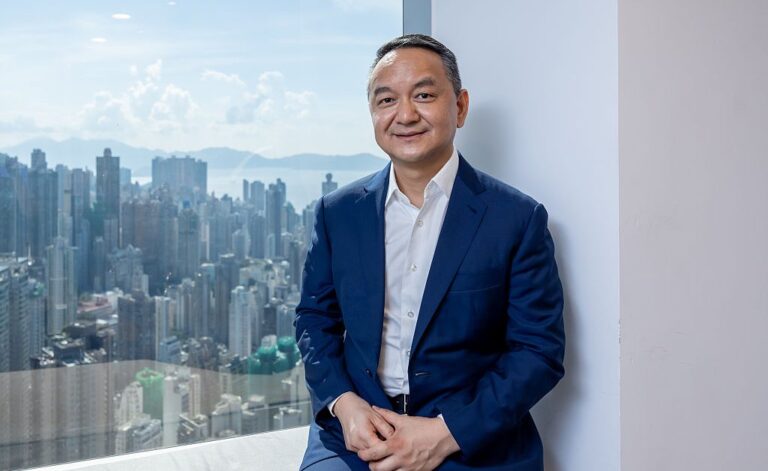As founder of $5 billion self-driving taxi firm Pony.ai, James Peng is a leader of the autonomous driving revolution. Formed in Silicon Valley in 2016, Pony.ai initially concentrated on Peng’s home market of China, but has since expanded across Europe, East Asia, and the Middle East. Pony.ai is currently transitioning from honing its AI-powered technology to large-scale deployment, targeting 2025 as its “mass production year,” with aims to build a fleet exceeding 1,000 vehicles by the year’s end. In May, the firm inked a strategic partnership to offer its driverless taxis via Uber in the Middle East, with a goal of scaling deployments via the app to additional international markets in the future.
A Stanford graduate who cut his teeth at Google and Baidu, Peng is bullish about Pony.ai’s position in a crowded marketplace because of the Chinese government’s fulsome backing of the technology. As of August 2024, Chinese public security authorities had issued 16,000 test licenses for autonomous vehicles and 20,000 miles of roads had been opened for testing.
“Strategically, we definitely have the ambition to go global,” says Peng, who is included on this year’s TIME100 AI list. “Because mobility needs are everywhere. Using technology to have a positive societal impact should be our ambition.”
This interview has been condensed and edited for clarity.
You recently unveiled your seventh generation robot taxi at the Shanghai motor show. What upgrades and advantages does that bring?
It has a lot of the advantages over the last generation, but I think the most prominent ones are all the sensors, and the computer systems will be all autonomous, meaning they will have much higher quality and last longer. And, for example, the LIDARs we use actually are already widely used for the [Level 2] systems, so we can share the supply chain and the ecosystem. As they are widely used components, the cost drops significantly. I think compared with last generation, the overall cost dropped 70%.
Why are you taking your time to scale up the business?
One of the primary reasons that we have not scaled up aggressively yet was because the existing model still lost money. The newer generation, according to our predictions, will have a positive contribution margin, meaning that the life cycle of the vehicle should have positive raw margin. That means when we add a vehicle at least it’s not losing money. That’s one of the primary criteria that we use for large scale-up. I see we do think that in this newer generation, we should be able to achieve this.
Pony.ai was founded in Silicon Valley but your focus has been on expanding in cities in China. What’s the rationale behind that decision?
One of the primary reasons is because the China market itself, in terms of mobility, is already the number one globally. For ride-hailing including taxis, I believe China’s daily rides are almost 40% of the global total. Another partial reason is because of my heritage, so I want to contribute to China.
What other markets are you looking to expand into next?
We actually already have some efforts in South Korea, Singapore; we just last year established a presence in Luxembourg, thanks to the support of the local government. And we’re looking at the Middle East as well.
How does the regulatory framework differ in China and the U.S.? Is it easier to get official approval to test and roll out in China?
Each country definitely has pros and cons. It has a lot to do with the customs and the legal systems. In most Eastern countries, and probably even in Europe a bit, regulation is more comprehensive. It’s step by step. So on a high level, it’s much harder to get a license to do anything, including autonomous driving. But the good thing is that once you have the license, the government has more leeway to support you. In the U.S., it’s easy to get a license. But if you’re ever in an accident and it’s your fault, they will heavily penalize you. In China, it’s a lengthier process but in a way government and private firms work more hand in hand.
If you’re going to be rolling out thousands of robotaxis, there will eventually be some accidents. How should legal responsibility be handled if a robotaxi is involved in a fatal collision?
First and foremost, it currently uses the existing regulatory framework, meaning that whoever is at fault is still judged by the existing transportation law. In terms of who’s responsible, it’s actually the owner of the vehicle as the first line of response. Because in some cases, we work with our partner who acquired the vehicle. But of course, afterwards, you can go deeper to say, ‘which party is one who’s responsible?’ But our design principle has always been trying to avoid accidents as much as possible. And if an accident is unavoidable, we actually have different ways to try to lower the severity of accidents.
What makes your proprietary AI system unique?
First, we have sensors that cover 360 degrees, we have no blind spots. That’s much better than the human [field of view], which is roughly 120 degrees. Another thing is we use extensive training to really make the AI driver, or the virtual driver, a lot better.
When a human driver has a near miss, or gets in a difficult situation, they experience it once and get out of it. For us, once we collect the data, we can generate hundreds or thousands of permutations—maybe I can add another vehicle coming the other way, and put our vehicle in slightly different difficult situations and train it many, many times. So a lot of what-if scenarios can be played in the large scale simulation—like a game engine where we play different combinations. So that’s a much better way compared with a human driver, who can only do it once. We do it probably billions of times. So that’s how it can learn driving behavior much quicker than typical humans.
Obviously, AI is a massive topic in China at the moment, with the success of DeepSeek sending markets soaring. What is your assessment of the AI boom in China at the moment? Is it a real thing or a bit overblown?
I think a bit of both. OK, it’s definitely real. It’s here in the economy. It is evolving very fast, probably faster than we even expected several years ago. But at the same time, the overall state of the real intelligence is still very nascent. Because like any revolutionary technology—even the Internet, even the mobile revolution—it takes some time to mature. What you have seen, even DeepSeek, is still more or less a potential foundation model. You can see a lot of potential, but it takes time to be realized and to really revolutionize our daily life.
Your company was founded in the U.S. but your focus is on China. How are the current trade and technology tensions between the two countries affecting your business?
It definitely has some [effects]. First and foremost, we can’t change anything, so we have to cope with the existing environment. We are trying to minimize the influence as much as possible. For example, we have to conform to the law. That means we will not transfer any data between our China office and the U.S. offices. We have to abide by all regulations. But the good news is we have been developing for many years already. The technology has started maturing, so we can almost feel like China and the U.S. can operate autonomously, and we can pursue different markets respectively.
Does the U.S. blocking China’s access to high-end chips such as those produced by Nvidia affect you?
We don’t use those high-end data center types of chips like [Nvidia’s] H100. Rather within the vehicle, we use the autonomous grade chips, which are already widely used and not on the sanction list. On our training side, we use some old generation chips and we use software optimization to compensate for the hardware limitation. So we’re not being affected that much.
You were born in China and studied at Tsinghua and then Stanford and then worked in Silicon Valley. But it seems like the new generation of Chinese tech entrepreneurs are more locally trained. Most of the developers at DeepSeek have only studied in China. Are you worried that there’s not so much collaboration between China and Silicon Valley?
Personally, I feel like I’m a beneficiary of that collaboration and open communication. Open dialog can broaden horizons for a lot of people. So definitely, I’m all for openness, communication and collaboration. But it’s also a testament not only to the technology itself, but also for the talent training itself that China has already gone a long way catching up actually quite fast. Because I think China has a lot of raw talent, what it was lacking was this comprehensive ecosystem. But I think even on that front China is catching up a bit.
Today, a lot of big companies—Softbank, Alibaba, etc—are plowing hundreds of billions of dollars into achieving artificial general intelligence, or AGI. Do you believe AGI is on the horizon?
It has a lot to do with your definition of AGI. If the AGI is defined as passing the Turing Test, where you cannot tell the difference between a human and AI bot, that’s definitely an achievable goal. We’ll probably be able to see [that] in five to 10 years. But if you’re talking about AGI as more like the Terminator, so self-aware, where it’s super intelligent, that’s probably still going to be far away.
So when’s Judgment Day coming?
Probably not for a decade or two!








